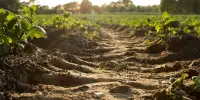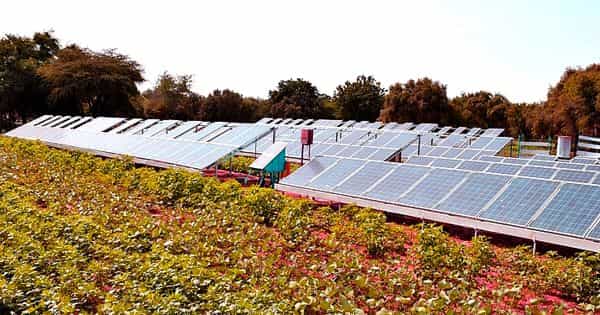Scientists have compiled a quantitative assessment of agricultural sustainability for countries worldwide, based not only on environmental impacts but also on economic and social impacts. The Sustainable Agriculture Matrix, or SAM, provides independent and transparent national-level measurements of agricultural sustainability that can assist governments and organizations in evaluating progress, encouraging accountability, identifying priorities for improvement, and informing national policies and actions toward sustainable agriculture around the world.
For the first time, scientists have compiled a quantitative assessment of agricultural sustainability for countries around the world that takes into account not only environmental but also economic and social factors. The Sustainable Agriculture Matrix, or SAM, provides independent and transparent national-level measurements of agricultural sustainability that can assist governments and organizations in evaluating progress, encouraging accountability, identifying priorities for improvement, and informing national policies and actions toward sustainable agriculture around the world.
“This Sustainable Agriculture Matrix is an effort to promote accountability for nations’ commitments to sustainable agriculture,” said Xin Zhang of the University of Maryland Center for Environmental Science, project leader. “We hope that this can be used to bring stakeholders together. Agriculture production is about more than just farmers. It concerns everyone.”
Scientists have assembled a quantitative assessment for agriculture sustainability for countries around the world based not only on environmental impacts but economic and social impacts, as well.
Agriculture is fundamental to sustainability. However, the definition of “sustainable agriculture” and the ability to measure it has been difficult to quantify. The project to create the Sustainable Agriculture Matrix began in 2017 by bringing together about 30 stakeholders and experts from around the world — including Oxfam, the International Institute for Applied Systems Analysis, the International Food Policy Research Institute, and the United Nations Food and Agriculture Organization, as well as academic partners such as University College London, University of Queensland, University of California Berkeley and the University of Maryland Center for Environmental Science — to assess the impacts of agricultural production on a national scale around a diverse range of environmental, economic, and social dimensions of sustainability.
“Sustainable agriculture is a very complicated concept that means different things to different people, making it difficult to assess,” Zhang explained. “In order to hold countries accountable for their commitment to sustainable agriculture, independent and transparent assessments of their sustainability are required.”
“The evaluation of sustainability is difficult, especially given the scarcity of social data in all countries. We hope that by using this matrix, we can demonstrate the importance of investing more in social data to assess how agriculture affects and contributes to social equity as a critical dimension of agricultural sustainability “said Oxfam America co-author Kimberly Pfeifer.

Agriculture faces the global challenge of increasing productivity in order to meet rising population demands for food, materials, and energy. Nations are tasked with developing a resilient agriculture sector that is not only productive but also nutritionally adequate, compatible with ecosystem health and biodiversity. As a result, sustainable agriculture was included in the Sustainable Development Goals, which were ratified by all United Nations member countries in 2015.
The first edition of the matrix includes 18 indicators that measure the direct impacts of agricultural production on the environment and economy, as well as broader impacts on society as a whole, recognizing that agriculture is inextricably linked to other sectors. This first edition focuses on identifying trade-offs between performance indicators, such as improved economic performance versus reduced environmental performance, as well as some less common examples of trade-offs, such as increased agricultural subsidies not necessarily improving human nutrition.
“There haven’t been efforts that provide a comprehensive look at all three dimensions of agricultural impacts for countries around the world,” said University of Maryland Center for Environmental Science co-author Eric Davidson. “The underlying concept of this matrix is an acknowledgment that the agricultural system can have multiple impacts on sustainability.”
For example, while agricultural production may provide a thriving economic benefit to the farming community as well as national economic development, it may also place additional strain on the environment in terms of water use, nutrient pollution, and biodiversity loss. The ability and willingness of the national agricultural sector to provide a healthy and sufficient diet for its own population may have an impact on social equality.
“The comprehensive assessment for the sustainability of a country’s agriculture provides a great opportunity to reveal the full range of potential tradeoffs, as well as synergies, among multiple sustainability goals, and allows informed choices in light of local or policy priorities,” said United Nations Food and Agriculture Organization co-author Amy Heyman.
“While most countries have demonstrated strong tradeoffs between the environmental and economic dimensions of agricultural sustainability, some countries, such as the United States, are showing some promising signs of achieving synergies between enhancing agricultural productivity and reducing environmental impacts,” said co-author Guolin Yao of the University of Maryland Center for Environmental Sustainability.
“I want to broaden my perspective on agricultural management. It’s not just about what happens on the farm, but also about what happens in the market, during policy debates, and on our plates. Consumer choices have a significant impact on what is produced, as well as where and how it is produced “Zhang stated.
“The green revolution enabled humanity to feed massive population growth in previous decades, but at the cost of significant environmental impacts and a disregard for human nutrition and overall well-being,” said co-author Kyle Davis of the University of Delaware. “Our SAM approach provides a promising step beyond the shortcomings of the green revolution while attempting to build on global agriculture’s past successes.”
As a next step, the SAM consortium, a Belmont Forum-funded project, is launching with six pilot countries and regions, including the United States, Austria, Brazil, Turkey, South Africa, and Sub-Saharan Africa. The consortium will use the first edition of SAM indicators as a starting point for engaging stakeholders in conversations and coordination, as well as co-developing country cases to identify strategies for sustainable agriculture.
“Having the assessment is an important first step toward agricultural sustainability, especially in marginal production areas in Africa,” said Tafadzwa Mabhaudhi of the University of KwaZulu-Natal in South Africa, a member of the SAM consortium.
“This is a useful starting point not only for evaluating progress but also for identifying priorities for improvement and informing national policies and actions toward sustainable agriculture,” said co-author and SAM consortium partner Christian Folberth of the International Institute for Applied Systems Analysis.
















